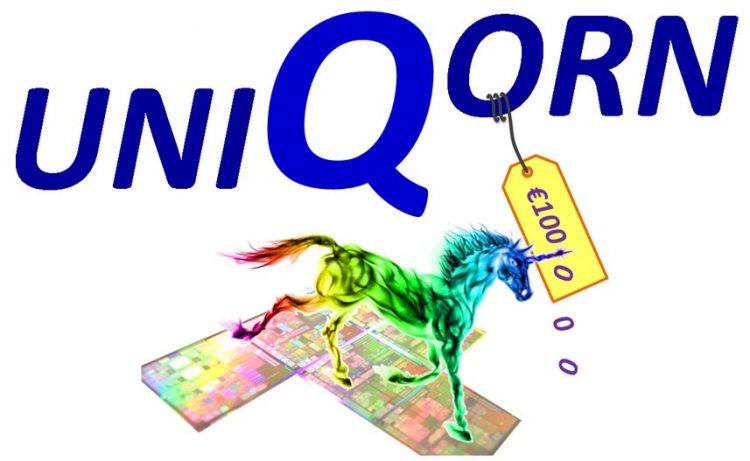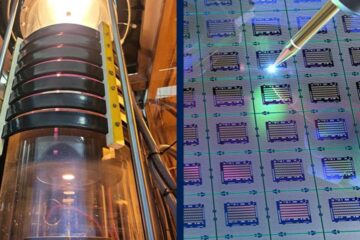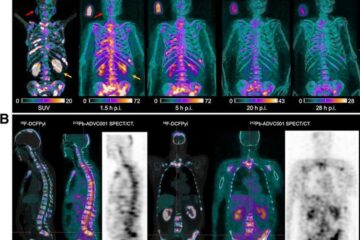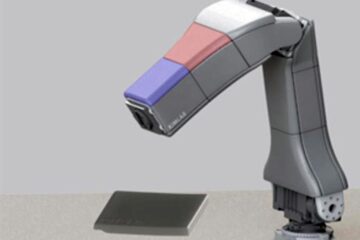Fraunhofer HHI develops next-generation quantum communications technology in the UNIQORN project

The hybrid photonic integration platform PolyBoard, developed at Fraunhofer HHI, enables the flexible and efficient combination of various optical functionalities on a single chip. This toolbox will be further developed in the coming years as part of the “Quantum Flagship” of the European Union to meet the specific requirements of novel quantum technologies.
The project UNIQORN (Affordable Quantum Communication for Everyone: Revolutionizing the Quantum Ecosystem from Fabrication to Application) has set itself the goal of miniaturizing quantum technologies using photonic integration and making them available to users as system-on-chip solutions.
The project will develop the key components for the quantum communications systems of the future. They are used, among other things, to generate true random numbers and to secure key distribution and include specialized quantum optical sources and detectors. An important focus of the research is on integrated system-on-chip solutions. They are the basis for highly miniaturized optical systems that can fully exploit quantum mechanical properties such as entanglement and squeezed light.
The core of this integration is the micro-optical bench technology of the PolyBoard platform, which makes it possible to combine large, millimeter size, optical components such as crystals for generating entangled photons with typically sub-millimeter sized integrated optical components and functionalities on a PolyBoard chip. It is based on the generation of free-space optical areas inside photonic integrated chips with the help of specially adapted lenses.
As a result, known material systems for quantum technology can be combined directly with photonic integrated circuits, without having to compromise on the performance of the micro-optical components. So far, this technology facilitated the development of miniaturized optical components for telecom and datacom applications as well as micro-optical chips for analytics and sensor technology.
In the UNIQORN consortium, which is coordinated by the AIT (Austrian Institute of Technology), 17 partners from all over Europe are working on a multidisciplinary research agenda. Research institutes (AIT, Fraunhofer HHI, Interuniversity Microelectronics Center) with many years of experience in the transfer of academic basic research into industrial applications will work with quantum researchers with theoretical and experimental know how (University of Vienna, University of Paderborn, University of Innsbruck, Technical University of Denmark).
The project can also draw on photonics and electronics as well as integration and packaging expertise (Eindhoven University of Technology, Micro-Photon Devices, Politecnico Milano, Smart Photonics, Institute of Computer and Communication Systems of Athens, VPI Photonics, Cordon Electronics). The perspective of the industrial end users is being introduced by the system provider Mellanox and the operator Cosmote. Field evaluation will be conducted in a Smart City test environment operated by the University of Bristol.
“The Austrian Institute for Technology is a world leader in quantum communication. We are proud that we were selected by the consortium as a partner for integrated optics and that our technology platform PolyBoard contributed to the successful evaluation in the highly selective selection procedure of the EU,” says Prof. Dr. Martin Schell, Executive Director of Fraunhofer HHI.
https://www.hhi.fraunhofer.de/en/press-media/press-releases.html
Media Contact
All latest news from the category: Information Technology
Here you can find a summary of innovations in the fields of information and data processing and up-to-date developments on IT equipment and hardware.
This area covers topics such as IT services, IT architectures, IT management and telecommunications.
Newest articles

Silicon Carbide Innovation Alliance to drive industrial-scale semiconductor work
Known for its ability to withstand extreme environments and high voltages, silicon carbide (SiC) is a semiconducting material made up of silicon and carbon atoms arranged into crystals that is…

New SPECT/CT technique shows impressive biomarker identification
…offers increased access for prostate cancer patients. A novel SPECT/CT acquisition method can accurately detect radiopharmaceutical biodistribution in a convenient manner for prostate cancer patients, opening the door for more…

How 3D printers can give robots a soft touch
Soft skin coverings and touch sensors have emerged as a promising feature for robots that are both safer and more intuitive for human interaction, but they are expensive and difficult…





















